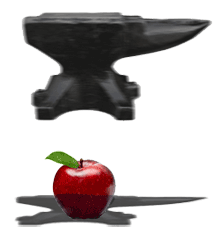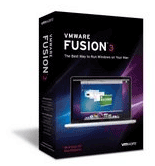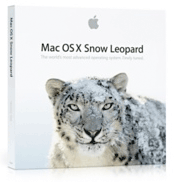Apple’s Mac App Store has launched. (You’ll need to download OS X 10.6.6 to get it.) I wrote about it for Techland and will be back with more thoughts once I’ve had a chance to use it a bit. (First impression: “Wow, this really is virtually identical to the iOS App Store experience.”)
Tag Archives | Apple OS X
The Appliance Age of Computing
 My weekly Technologizer column for TIME.com this up. I wrote about the overarching message of last week’s Apple event–which, between the almost entirely solid-state MacBook Airs, the iPad-like new version of OS X, and the Mac App Store, is that Apple is trying to reinvent the Mac into something that looks a little less like a personal computer and a little more like an appliance.
My weekly Technologizer column for TIME.com this up. I wrote about the overarching message of last week’s Apple event–which, between the almost entirely solid-state MacBook Airs, the iPad-like new version of OS X, and the Mac App Store, is that Apple is trying to reinvent the Mac into something that looks a little less like a personal computer and a little more like an appliance.
Is that good news or bad? As with most change, it combines both upside and downside, and it’s Apple’s responsibility to pull it off in a way that works for its customers. (I like the first tangible results, the surprisingly iPad-like new Air, and will be writing more about it.)
No comments
Psystar Thought It Could Sell Twelve Million Mac Clones a Year
 Fascinating coda to the story of Pystar, the unauthorized maker of OS X computers which Apple is trying to put out of business: Gregg Keizer of Computerworld has reported on the sales projections that Psystar made to to prospective investors.
Fascinating coda to the story of Pystar, the unauthorized maker of OS X computers which Apple is trying to put out of business: Gregg Keizer of Computerworld has reported on the sales projections that Psystar made to to prospective investors.
Under its conservative projections, Psystar told investors it would sell 70,000 computers in 2009, 470,000 systems in 2010 and 1.45 million machines in 2011. The firm’s aggressive growth model, however, put those numbers at 130,000, 1.87 million and 12 million during 2009, 2010 and 2011, respectively.
By comparison, Apple sold 10.4 million Macs during its 2009 fiscal year, the 12-month span that ended Sept. 30, 2009.
Psystar wasn’t just telling investors it could succeed: It was telling them it could get roughly fifty percent of the market for OS X computers, despite having a business plan that guaranteed a bruising, pricey, possibly-fatal legal battle with the company that made the OS it used.
As Keizer notes, an economist working for Apple can identify only 768 computers that Psystar has sold. Um, that’s a shortfall from even its “conservative” projection of 70,000 systems in 2009, right?
Psystar’s online store remains open as I write, but with Apple seemingly on the verge of scoring a knockout punch that will end Psystar’s OS X sales, I’d love to know if anyone who knows what’s going on is plunking down money for its Open line of pseudoMacs right now.
As long as I’m talking Psystar: Here’s the best behind-the-scenes story I’ve seen about the brothers behind the company. It’s by Tim Elfrink of the Miami New Times.
6 comments
Windows Copies the Mac? Shhh, That’s Our Little Secret!
 [UPDATE: Microsoft’s Windows blogger Brandon LeBlanc has disowned Aldous’s comments.]
[UPDATE: Microsoft’s Windows blogger Brandon LeBlanc has disowned Aldous’s comments.]
This is amusing: Simon Aldous, a “Microsoft partner group manager” in the UK, gave an interview to British tech site PCR in which he says that Microsoft wanted to give Windows 7 a “Mac look and feel”:
One of the things that people say an awful lot about the Apple Mac is that the OS is fantastic, that it’s very graphical and easy to use. What we’ve tried to do with Windows 7 – whether it’s traditional format or in a touch format – is create a Mac look and feel in terms of graphics. We’ve significantly improved the graphical user interface, but it’s built on that very stable core Vista technology, which is far more stable than the current Mac platform, for instance.
I’m guessing that Aldous is far enough removed from Redmond that he forgot you aren’t supposed to say things like that. (I mean, nobody involved with New Coke cheerfully told us that the goal with it was to make Coke taste more like Pepsi.) But the funny thing is, the only part of Windows 7 that strikes me as newly Mac-like is the Taskbar, whose bigger, unlabeled icons do indeed look more like OS X’s Dock.
On a meta-level, every version of Windows has cribbed from the Mac, and the versions released in this decade (Windows XP, Vista, and 7) all draw overall inspiration from the polished look of Apple OS X. But Windows 7 has its own perfectly pleasant aesthetic. I ultimately prefer Snow Leopard’s–it’s more subdued and consistent–but if you told me you liked Windows 7’s flashier feel, I wouldn’t argue the point.
Oh, and a side topic: As a heavy user of both Vista and OS X, I’d love to get the details on how “the core Vista technology” is far more stable than OS X…not that both operating systems aren’t capable of crashing spectacularly in the right circumstances.
11 comments
Hackintosh Trouble?
 Apple may be suing Mac clone merchant Psystar, but its policy towards individuals who install OS X on non-Apple hardware to create “Hackintoshes” seems to have been to ignore them rather than to frustrate them. That may be about to change.
Apple may be suing Mac clone merchant Psystar, but its policy towards individuals who install OS X on non-Apple hardware to create “Hackintoshes” seems to have been to ignore them rather than to frustrate them. That may be about to change.
According to OS X Daily, Apple’s upcoming OS X 10.6.2 update prevents Snow Leopard from running on computers that use Intel’s Atom CPU. If true, that would make it incompatible with the vast majority of netbooks in one fell swoop.
I don’t want to assume that the OS X Daily story is the real deal until it’s received independent confirmation, and even if it is true, it’s possible that there’s an explanation that has nothing to do with Apple’s attitude towards Hackintoshes. But if Apple does want to foil Hackintoshes, this would be a good way to go about it. (Of course, it’s entirely possible that Hackintosh makers will simply hack OS X 10.6.2 further to reintroduce Atom support.)
OS X Daily wonders whether Apple might move against Hackintosh netbooks because it’s getting ready to introduce a tablet. Maybe so, but the number of folks in the world who are willing to go through the effort of putting OS X on a PC must be one-tenth of one-percent of the market that Apple would like to capture with a tablet. It would be nice to think that the two platforms–if you can call Hackintoshes a platform–could quietly, unofficially coexist.
Anyhow, here’s a T-Poll:
One comment
Microsoft, Apple Debate Operating Systems
 Snow Leopard vs. Windows 7 debate.
Snow Leopard vs. Windows 7 debate.
Wolfram Alpha iPhone app: $50?
What’s Mozilla’s secret Firefox app?
Scottsdale Microsoft Store opens Thursday.
Thoughts on Twitter’s Lists feature.
Sony shows a 360-degree display.
Where’s that Sidekick data, Microsoft?
Tweet: Verizon Pre early 2010.
________________________
Like 5Words? Subscribe via RSS.
No comments
Will Windows 7 Hurt Mac Sales?
 Among the many questions that Windows 7’s imminent release is prompting is this: Will it result in fewer Windows users deciding to switch to Macs, thereby halting the slow erosion in Windows’ market share that we’ve seen during the Vista era? So far, there’s no consensus on wht’s likely to happen:a
Among the many questions that Windows 7’s imminent release is prompting is this: Will it result in fewer Windows users deciding to switch to Macs, thereby halting the slow erosion in Windows’ market share that we’ve seen during the Vista era? So far, there’s no consensus on wht’s likely to happen:a
- At Computerworld, Gregg Keizer reported on an analyst’s prediction that Windows 7’s release wouldn’t hurt Mac sales, and might even help them;
- BetaNews’s Joe Wilcox says the analyst’s analysis is wrongheaded, and that he thinks Windows 7 will put a dent in Apple’s growing market share;
- Daring Fireball’s John Gruber concurs with some of Wilcox’s take but says that the competition between Windows and Macs is pretty indirect;
- Peter Burrows of BusinessWeek interviewed Apple’s Phil Schiller, who contends that Windows 7 presents a good opportunity to sell more Macs, since buying a new Mac is easier than upgrading a Windows XP machine to Windows 7. (Um, wouldn’t you need to back up and restore data and reinstall apps if you were moving to the Mac, too?)
I’m not going to predict how Windows 7′ release will impact Mac sales–hey, making no predictions is the best way to avoid making boneheaded ones–but a few thoughts on the dynamics of the competition:
- Unless Windows 7’s driver situation is worse than it seems and/or PC manufacturers manage to screw the OS up with unwantedware, it’s going to make for better PCs than Windows Vista ever did;
- I’d still rate Snow Leopard as the better OS, but the gap between the two platforms is smaller than it’s been in a long time;
- Windows 7 doesn’t do much to reduce the need of Windows users to worry about security in a way that Mac owners don’t;
- It also doesn’t eliminate such Mac virtues as the bundling of iLife;
- As John Gruber says, the competition between Windows and Macs only happens at the high end of the market–most people who buy Windows buy it on cheaper, lower-end computers for which there is no Mac counterpart.
Ultimately, I keep coming back to the notion that most people really don’t have any particular desire to switch operating systems. If Windows 7 lives up to its promise and expectations, it’ll leave fewer Windows users tempted to dump the OS. But I suspect that most folks who have made the jump to the Mac aren’t coming back.
Your take?
7 comments
VMware Fusion 3 Takes Windows-on-Mac Up a Notch
 Was it really only a little over three years ago that the formerly fanciful notion of being able to run Windows apps within OS X without major limitations became reality? Today, archrivals Parallels Desktop and VMware Fusion continue to undergo aggressive upgrades aimed at making the virtualization of Windows on Macs even more powerful, seamless, and simple. And today, VMware is announcing that it’s taking preorders for VMware Fusion 3, which will ship on October 27th.
Was it really only a little over three years ago that the formerly fanciful notion of being able to run Windows apps within OS X without major limitations became reality? Today, archrivals Parallels Desktop and VMware Fusion continue to undergo aggressive upgrades aimed at making the virtualization of Windows on Macs even more powerful, seamless, and simple. And today, VMware is announcing that it’s taking preorders for VMware Fusion 3, which will ship on October 27th.
I haven’t had any hands-on time with the new version yet, but the list of features that VMware has revealed leaves me anxious to get my mitts on it:
- Snow Leopard support, including a 64-bit engine and support for OS X’s 64-bit kernel.
- Full support for Windows 7, including the Aero interface and Flip 3D task switching and better support for DirectX and OpenGL graphics.
- A migration utility that lets you import a real PC’s Windows installation over the network. (Parallels introduced something similar in August, but did so in a separate version of the product that does the job over a bundled USB cable.)
- A menu for your Windows apps that appears on the right-hand side of OS X’s Menu Bar, reducing or eliminating the need to use Windows’ Start menu and Taskbar.
- A more efficient engine that’s less taxing on a Mac’s CPU, can run Windows well in 1GB of RAM, and reduces battery drain, according to VMware. I’m especially happy about that last point–my biggest beef with both Fusion and Parallels is the dramatically reduced battery life I get when they’re running. (Still to be determined: How this version’s speed compares to Parallels–the Parallels folks understandably like to tout this MacTech story that shows their product outperforming Fusion 2 in most tests.)
In all, VMware says that Fusion 3 has more than fifty new features. It’ll cost $79.99 for new users; an upgrade version will be $39.99. A few screens supplied by VMware after the jump.
5 comments
Apple Scrubs Snow Leopard’s Spots
 Apple has delivered a service pack for its Snow Leopard operating system just a matter of two weeks after it shipped. The company says that the update will “enhance the stability, compatibility, and security of your Mac.”
Apple has delivered a service pack for its Snow Leopard operating system just a matter of two weeks after it shipped. The company says that the update will “enhance the stability, compatibility, and security of your Mac.”
The update targets specific issues such as device driver compatibility and performance, stuck DVD drives, and SMTP routing. More importantly, it fixes three major security vulnerabilities, including one that Apple introduced by bundling an outdated version of Adobe’s Flash run time that had a well-publicized security hole.
Apple already patched existing versions of OS X for the vulnerability in July. That should have been a showstopper for Snow Leopard’s distribution.
4 comments
5Words for Thursday, September 3rd 2009
Like 5Words? Subscribe via RSS.
Snow Leopard’s old Flash Player.
Another AT&T/iPhone angst story.
iPhone MMS coming September 25th.
Windows 7 parties across America.
